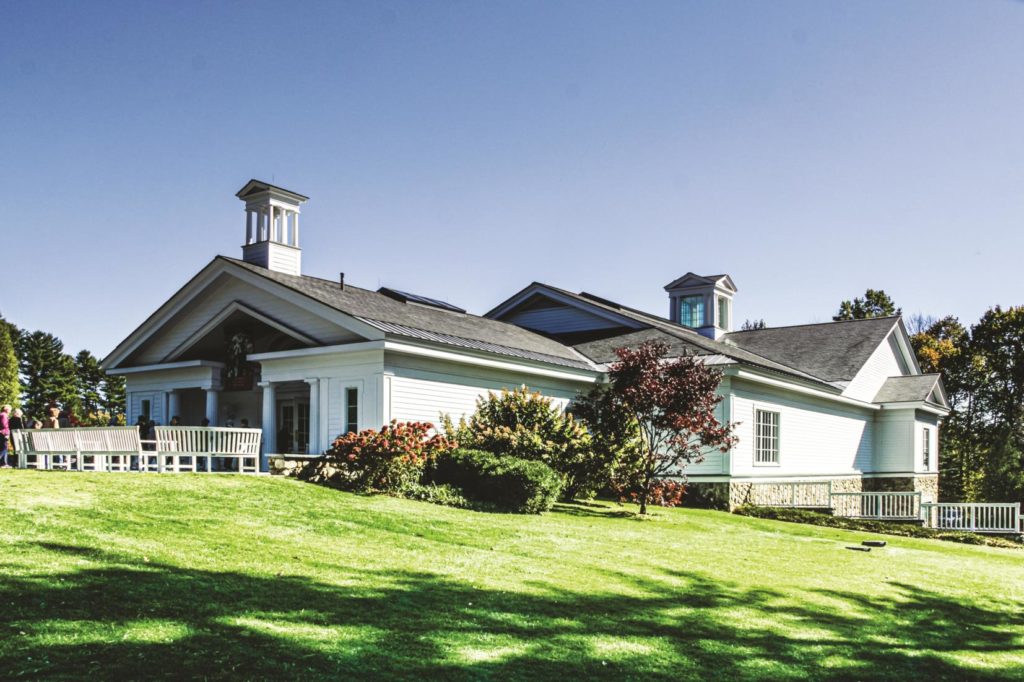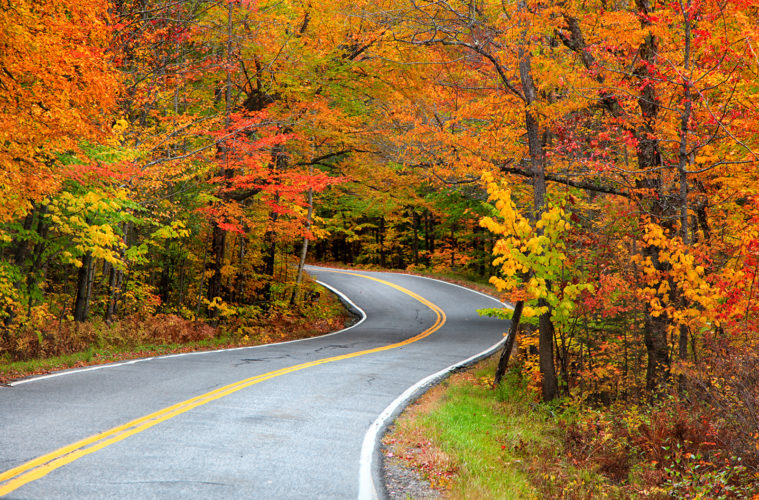Nestled among the rolling Berkshires, the town of Stockbridge has a quaint familiarity about it, with its tree-lined Main Street, small shops, church, and the Red Lion Inn’s grand, rocking chair–lined front porch.
If this idyllic New England scene feels like it’s been plucked from a Norman Rockwell painting or an American folk song, that’s because it has inspired both. It’s the town with “three stop signs, two police officers, and one police car” that Arlo Guthrie sang about in “Alice’s Restaurant,” and also the downtown village was rendered into magical immortality in Rockwell’s painting “Stockbridge Main Street at Christmas.”
The tiny town might only have a population of 1,947, but it’s had an outsized influence on American art, and this summer two of its most important institutions—The Norman Rockwell Museum and Chesterwood, Daniel Chester French’s home and studio—are celebrating their 50th anniversaries.
A stay at the iconic Red Lion Inn, which has been in operation since 1773, is essential during a visit to Stockbridge, as everyone from Teddy Roosevelt to Oprah Winfrey has experienced. The hotel feels of another era, with its birdcage elevator, claw-foot bathtubs, the thickly carpeted hallways so packed with art, antiques, and ephemera that the hotel offers guided tours of its collection.
For all its old-fashioned grandeur, the inn is cozy and welcoming, too. It has four restaurants for guests and non-guests, as well as a wine list of over 500 bottles and live entertainment. You’ll also likely spot a cat named Norman (the hotel’s “feline lobby ambassador”) curled up on a red velvet sofa or napping in front the lobby’s crackling fire.
Across town is the majestic Chesterwood, the summer home, studio, and gardens of sculptor Daniel Chester French of Lincoln Memorial fame. “It is off the beaten path, and I think that’s why French wanted to make his summer home here,” says Donna Hassler, Chesterwood’s executive director. “His whole aesthetic was about beauty: beauty in his life, beauty in his art, and beauty in nature.”
Chesterwood, which is celebrating its 50th anniversary as a site of the National Trust for Historic Preservation, offers visitors a fascinating glimpse into how French cultivated that aesthetic. There are carefully crafted formal gardens of French’s own design where he and his family entertained other artistic luminaries of the day, such as Edith Wharton, Henry James, and Isadora Duncan.

Chesterwood has 10 buildings on its 122 acres, but the standout is the Henry Bacon–designed sculpting studio, with its soaring 26-foot-high ceiling that’s tall enough to accommodate large-scale equestrian statues.
To explore the work of a very different Stockbridge artist, visit the friendly and welcoming Norman Rockwell Museum, where his famous comforting images are displayed as large-scale paintings, which he created for magazine covers.
Although the scenes are familiar from magazines like the Saturday Evening Post, seeing Rockwell’s art in this new way is thrilling and adds a fresh dimension to works that are so recognizable and uniquely American that they feel a part of our collective DNA. Examining the images as large paintings also allows the viewer to appreciate anew the meticulous detail, skill, and beauty in each picture, and the tender everyday moments that make Rockwell’s work so special. “Rockwell was the master of getting a whole story into the picture frame,” says Margit Hotchkiss, the museum’s chief marketing officer.
The museum provides a fascinating look at his artistic process. For instance, Rockwell often painted from photographs and used his neighbors as models, as in “The Gossips,” which began as a photo montage, then became a sketch, and finally was realized as the finished painting and magazine cover. Visitors to Stockbridge this fall will find ongoing 50th-anniversary celebrations at each of these institutions. stockbridgechamber.org

